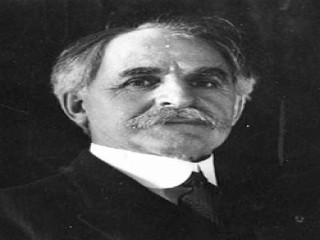
Hamlin Garland biography
Date of birth : 1860-09-14
Date of death : 1940-03-04
Birthplace : West Salem, Wisconsin, U.S.
Nationality : American
Category : Famous Figures
Last modified : 2011-05-31
Credited as : Author and novelist, poet, Pulitzer Prize
Hannibal Hamlin Garland , American author, augmented local-color writing by the new naturalistic techniques that combined realism with a sense of the individual's overwhelming struggle against a hostile environment.
In the late 1880s, when American local-color writers began to depict the brutal, dehumanizing aspects of life, the work which most effectively expressed the hardships of farmers of the northern prairies was Hamlin Garland's Main Traveled Roads (1891).
Garland was born near West Salem, Wis., on Sept. 14, 1860. Garland's father was an industrious farmer who moved his family from farm to farm in Wisconsin, Iowa, and South Dakota, hoping to wrest a better living from the fertile but unreliable fields. The successive homesteads—Garland later described them as "bare as boxes, dropped on the treeless plains"—provided little in the way of literature, but what little was available young Hamlin read with enthusiasm. His parents encouraged his literary interests and helped him get as much education as the area and his necessary work on the farm would allow. In 1882 he received a diploma from Cedar Valley Seminary in Osage, Iowa, where his family was then living. He took a brief trip to New England and then returned to teach school for 2 years in Illinois.
Garland's brief visit to Boston (which still kept up its pretense of being the literary capital of America) inspired him to return, and in 1884 he went to resume his education there. The only "university" he could afford was the Boston Public Library, but it proved ideal for him: whenever possible he devoted 14 hours a day to reading.
Garland entered Moses True Brown's Boston School of Oratory, working for his tuition. But, lacking money, he soon decided to give up his studies temporarily. When Brown heard that his brilliant pupil was quitting school, he proposed to make Garland a teacher. Consequently, in 1885 Hamlin Garland, "Professor of Elocution and Literature," presented public lectures on American, French, and German authors, the admission fee being his pay.
His lectures brought Garland the attention of Boston literary people, and his reviews, articles, and stories were soon appearing in the Transcript, Harper's Weekly, and other publications. His admiring reviews of William Dean Howells eventually led to a meeting with that important novelist and critic, beginning what Garland called "the longest and most important friendship" of his life. Garland's praise of poet Walt Whitman similarly brought him the acquaintance and encouragement of that giant. Garland's appearance—he was a strikingly handsome young man with well-tended long brown hair and beard—prompted Whitman to comment, "Garland is much better mettle than his polished exterior would indicate."
However polished his exterior, Garland's stories were intentionally plain and rough. This was apparent in his first and best book, Main Traveled Roads. His objective was to convey the hard, unromantic truth of life on the plains, and he accomplished it effectively. His hostility toward landowners is manifest in one of the best stories in this collection, "Under the Lion's Paw." A poor man with a sick wife and hungry children rents a dilapidated farm from a greedy town merchant who turns farmers' misery to his profit. The tenant farmer has the owner's promise that he can buy the property at a reasonable price if he can make it pay, and so he and his family slave for 3 years to improve the house, barn, and fences which will one day be their own. But when they have doubled the value of "their" farm, the owner doubles the price, ensuring that both land and tillers will remain mortgaged to him forever. Garland dedicated the book to his parents "whose half-century pilgrimage on the main roads of life has brought them only toil and deprivation."
Garland's commitment to realism in literature was expressed in his stories and also in his vigorous support of the new realistic drama and of many young realistic writers, most notably Stephen Crane. Crumbling Idols (1894) states Garland's theory of "veritism:" "The realist or veritist is really an optimist, a dreamer. He sees life in terms of what it might be, as well as in terms of what it is; but he writes of what is, and, at his best, suggests what is to be, by contrast." Garland seldom attained this ideal after 1891. His next novels, Jason Edwards, A Member of the Third House, and A Spoil of Office (all 1892), were hastily written propaganda pieces, not carefully wrought works of fiction. Rose of Dutcher's Coolly (1895) comes closer to fulfilling Garland's critical standard, although it is severely flawed.
In 1899 Garland married Zulime Taft, a beautiful woman with artistic training. Two daughters were born to the couple. After his marriage Garland consciously or unconsciously abandoned his bleak realism and in such books as The Captain of the Gray-Horse Troop (1902) achieved greater popularity at the cost of literary value. But if his fiction declined in quality, he found a new medium in which he could excell: autobiography. A Son of the Middle Border (1917) and A Daughter of the Middle Border (1921) treat his own life with honesty and understanding. The latter book received the Pulitzer Prize in 1922. Many honors came to Garland in his later years. He continued to write memoirs and accounts of psychic research until his death on March 4, 1940.
















